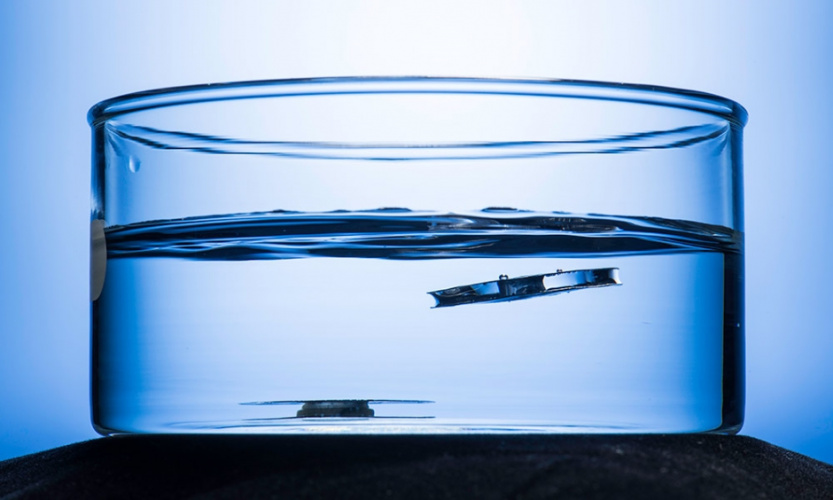The advance from the University of Rochester, New York, could lead to unsinkable ships, wearable flotation devices that continue to float after being punctured, or electronic monitoring devices that can survive in long term in the ocean.
This is the claim of Chunlei Guo, professor of optics and physics, whose lab describes the structure in ACS Applied Materials and Interfaces.
The structure uses a technique developed in the lab that uses femtosecond bursts of lasers to etch the surfaces of metals with intricate micro-and nanoscale patterns that trap air and make the surfaces super-hydrophobic.
Hydrophobic surfaces could provide more efficient cooling
Superhydrophobic coating is non-toxic and economical to produce
The researchers found that after being immersed in water for long periods of time, the surfaces may start to lose their hydrophobic properties, which led the team to a solution from the natural world.
Diving bell spiders and fire ants can survive long periods under or on the surface of water by trapping air in an enclosed area. Argyroneta aquatic spiders create an underwater dome-shaped web - a so-called diving bell - that they fill with air carried from the surface between their super-hydrophobic legs and abdomens. Similarly, fire ants can form a raft by trapping air among their superhydrophobic bodies.

"That was a very interesting inspiration," Guo said in a statement. As the researchers note in the paper: "The key insight is that multifaceted superhydrophobic (SH) surfaces can trap a large air volume, which points towards the possibility of using SH surfaces to create buoyant devices."
Guo's lab created a structure in which the treated surfaces on two parallel aluminium plates face inward, so they are enclosed and free from external wear and abrasion. The surfaces are separated by enough distance to trap and hold enough air to keep the structure floating.
Even after being forced to submerge for two months, the structures immediately bounced back to the surface after the load was released, Guo said. The structures also retained this ability even after being punctured multiple times, because air remains trapped in remaining parts of the compartment or adjoining structures.
Though the team used aluminium for this project, the etching process could be used for literally any metals, or other materials, Guo said.
When the Guo lab first demonstrated the etching technique, it took an hour to pattern a one-inch-by-one-inch area of surface. By using lasers seven times as powerful, and faster scanning, the lab has speeded up the process, making it more feasible for scaling up for commercial applications.




Poll: Should the UK’s railways be renationalised?
I think that a network inclusive of the vehicles on it would make sense. However it remains to be seen if there is any plan for it to be for the...